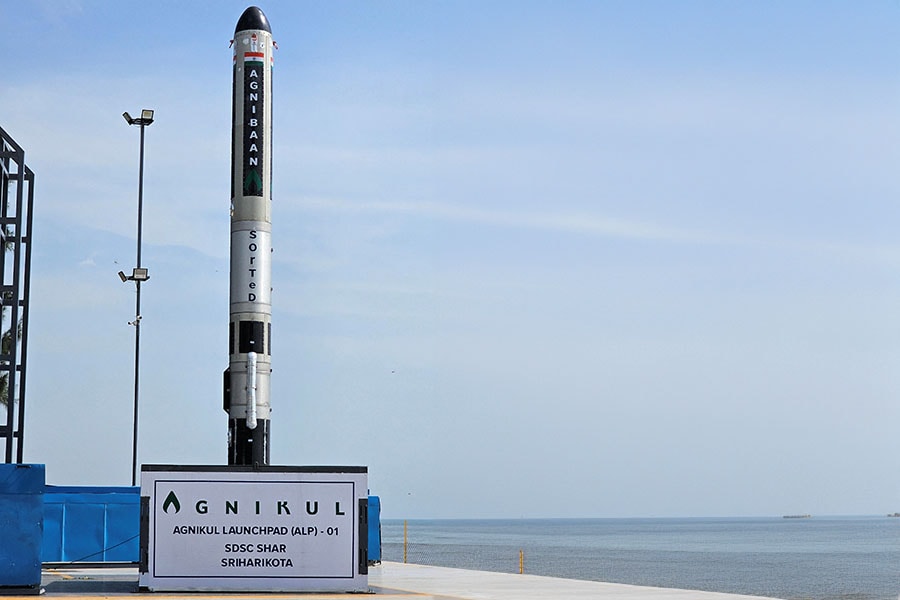Agnibaan-01 soars, boosts private Indian space tech to new heights
The successful test flight demonstrated a world-first single piece 3D-printed engine and India's first semi-cryogenic core
 (File) Agnibaan SubOrbital Technological Demonstrator (SOrTeD), vehicle is seen at Agnikul's Launchpad at Satish Dhawan Space Center in Sriharikota, India.
Image: Agnikul Cosmos Private Limited/Handout via REUTERS
(File) Agnibaan SubOrbital Technological Demonstrator (SOrTeD), vehicle is seen at Agnikul's Launchpad at Satish Dhawan Space Center in Sriharikota, India.
Image: Agnikul Cosmos Private Limited/Handout via REUTERS
Agnikul Cosmos, a space launch vehicle startup in Chennai, on Thursday successfully launch-tested its first technology demonstrator rocket that showed its one-piece 3D-printed engine worked as intended.
The successful test underscores the perseverance of 200-engineer team at Agnikul, led by founders Srinath Ravichandran and SPM Moin, that had to endure four previous scrapped launches, including at the final countdown during an attempt earlier in the week.
The indigenously designed and developed rocket, named Agnibaan, was launched from Sriharikota, home to the Indian Space Research Organisation’s (Isro) launch station, where Agnikul has its own launchpad, named Dhanush, which it set up in 2022.
The rocket, Agnibaan SOrTeD, Sub-Orbital Technology Demonstrator, was launched at 7.15 am. “Humbled to announce the successful completion of our first flight—Mission 01 of Agnibaan SOrTeD—from our own and India’s first and only private Launchpad within SDSC-SHAR at Sriharikota,” Agnikul said in a post on X.
Sub-orbital flight refers to altitudes of up to 100 km above the mean sea level, called the Karman Line, which denotes the start of space.


















